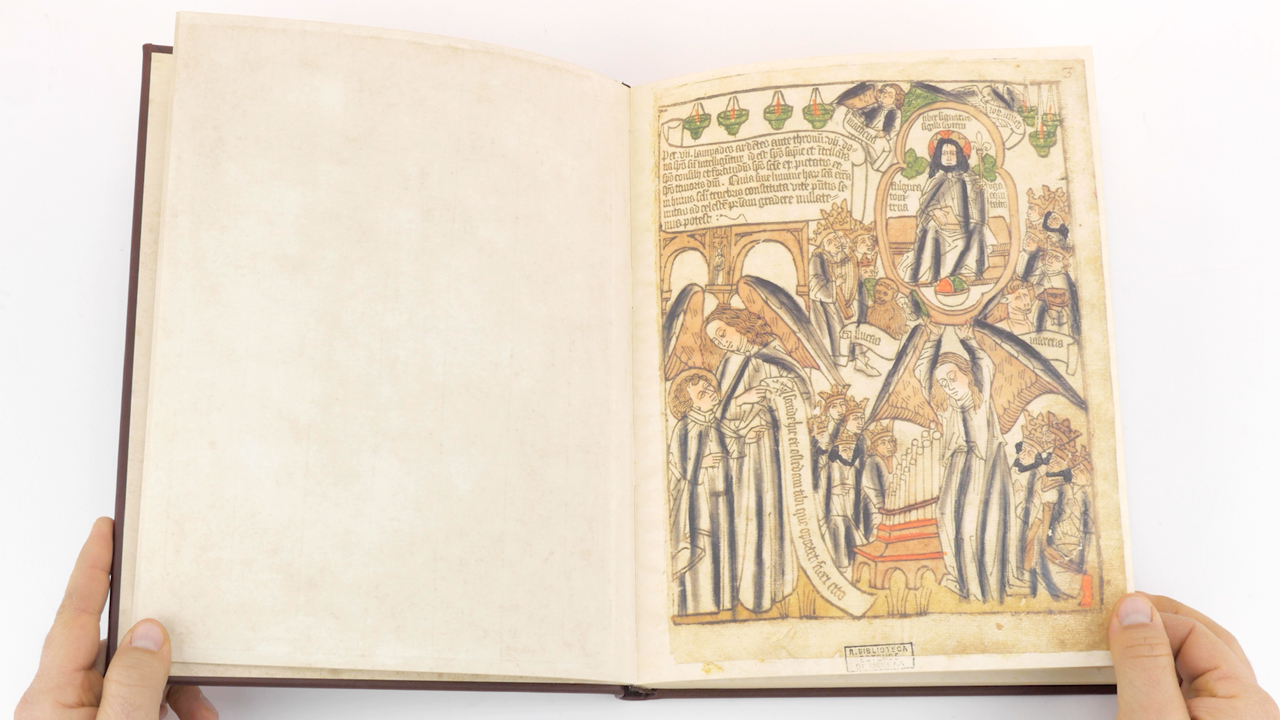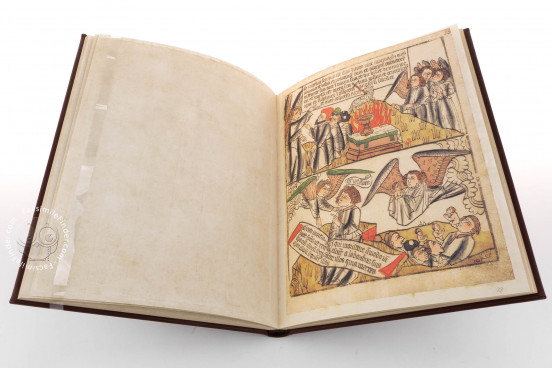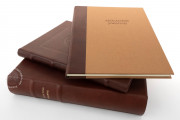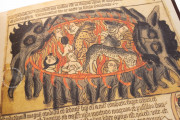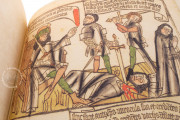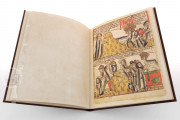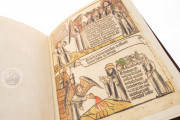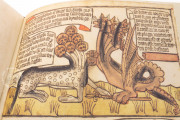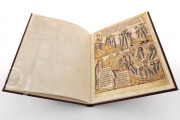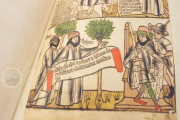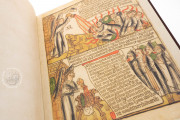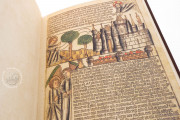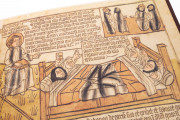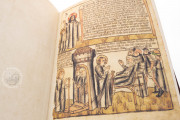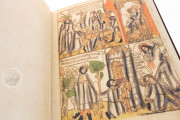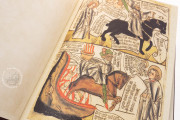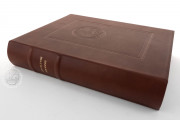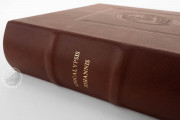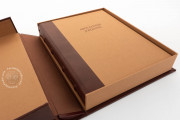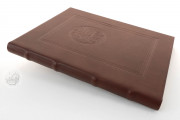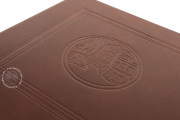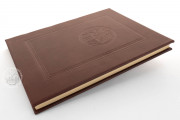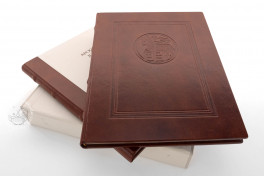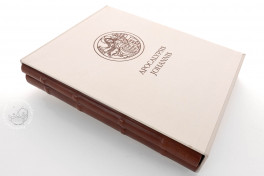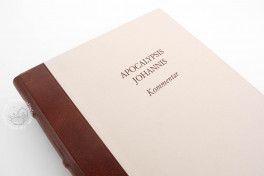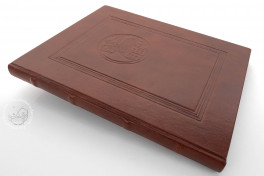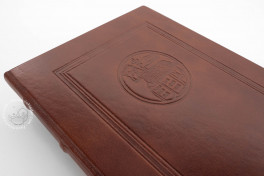The Estense Apocalypse, housed in the Biblioteca Estense in Modena, represents one of the most significant examples of early xylographic bookmaking. This extraordinary work, also known as the Apocalypsis Johannis, was printed in brown ink circa 1460, originating from either the Dutch or Rhine region. Its exceptional status in the history of printing derives not only from its age but also from its hand-colored illustrations, making it a unique artifact of early print culture. The content primarily follows the biblical narrative of Revelation, though it incorporates elements from apocryphal sources and folk traditions. The text appears either enclosed within decorative scrolls or positioned freely alongside the images.
Comprising 48 folios with 92 scenes in total, each illustration is demarcated by linear borders that both frame individual scenes and separate them from one another. The printed and hand-colored images appear exclusively on the recto side of each folio, with the verso remaining blank.
Affordable Religious Imagery
The Estense Apocalypse represents an important development in the accessibility of religious texts. The apocalyptic imagery had long served as a rich source for preaching, astrological interpretation, and artistic inspiration—as evidenced in works by Hans Memling, Albrecht Dürer, and the medieval illuminators of the Beatus of Liébana manuscripts. However, this particular work stands out as an early incunabulum that provided a more economical alternative to typeset publications, thereby bringing religious imagery to a broader audience.
Proto-Reformist Tendencies
Stylistically, the Estense Apocalypse bears similarities to contemporary Bibliae Pauperum (Bibles of the Poor) produced in German regions during the same period, while also showing influence from the early 15th-century Flemish artistic tradition. Notably, the work appears to anticipate emerging religious sentiments and artistic conventions. The engraver-painter's critical portrayal of clerical misconduct presages the reformist movements that would later transform religious life throughout Germanic territories and wider Europe.
Physical Characteristics and Innovative Structure
In the nineteenth century, the original plates underwent conservation efforts that involved detaching, trimming, and mounting them onto 22 × 29 cm folios. Particularly innovative for its time is the arrangement of plates, which strictly adheres to the biblical narrative sequence—an organizational approach unprecedented in similar codices of the period. The block-cut Latin text, rendered in medium to large lettering, either occupies scrolls or flows freely around the figures, achieving a remarkable integration of text and image that seems to prefigure modern comic art.
This integration of word and image, coupled with its accessible production method and proto-reformist content, positions the Estense Apocalypse as a pivotal work in the transition from medieval manuscript tradition to early modern print culture.
We have 2 facsimiles of the manuscript "Estense Apocalypse":
- Apocalypsis Johannis facsimile edition published by Edition Libri Illustri, 1998
- Apocalypsis Johannis facsimile edition published by Il Bulino, edizioni d'arte, 1999

